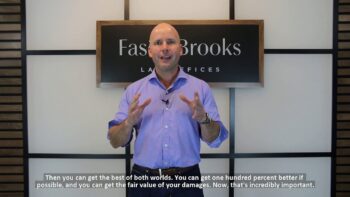
Making a Murderer, the Netflix documentary about the conviction of Steven Avery in 2007 for murder, is compelling television. I’m not alone in getting completely caught up in the story, binge watching the 10 part series because I couldn’t wait to find out what would happen next. Even as I was caught up in the narrative, the lawyer part of my brain was working overtime. My firm, Fasig & Brooks, handles personal injury and medical malpractice cases; we’re not criminal lawyers. Nevertheless, it was impossible to ignore the hits and misses during Avery’s troubling journey through the legal system.
Recently, I read the Honorable Alex Kozinski’s thought-provoking paper in the Georgetown Law Journal about our judicial system. In it, Kozinski, a judge on the United States Court of Appeals for the Ninth Circuit and noted legal analyst, lays out in exhaustive detail the flaws in our current system which allow for an innocent man to be convicted. It’s almost overwhelming, and is a sobering reminder that many have spent most- sometimes the rest- of their lives in jail for crimes they didn’t commit. As he points out, this happens far too often.
As I watched Making a Murderer, it seemed like the case of Steven Avery was yet another example of our flawed criminal justice system that Kozinski describes so well.
As much as it points to the deficiencies in our criminal justice system, Making a Murderer shows us the consequences of making hasty and biased judgements. Avery spent 18 years in jail for crimes for which he was later exonerated. He was released after DNA tests proved his innocence and came home a local celebrity. Two years later, he would be a pariah once again, as he was charged with the murder for which he was eventually convicted. Now, with the release of this documentary, that conviction is being called into question as well.
Because I am a personal injury lawyer, I know that what you see in the media- on talk shows, on documentaries, on blog posts- isn’t always the whole story. In my professional experience, the truth isn’t always floating on the surface, easily scooped up by the media and disseminated according to current public mores and opinion. It’s not that easy.
Take, for example, the case of the woman who sued McDonald’s after she suffered burns from their hot coffee. Pundits and comedians had a field day with it- “Woman sues for coffee being hot”- but the case was significantly more complex than a quick joke on a late night talk show. In reality, the plaintiff in the case, Stella Liebeck, suffered horrible and debilitating burns when the coffee came into contact with her skin. Moreover, documents produced by McDonald’s showed that they knew there was a safety concern with holding coffee at their chosen temperature. The Shriner’s Burn Institute in Cincinnati had previously warned the franchise food industry that serving beverages over 130*F was causing unnecessary burns. Moreover, even though hundreds of customers had been injured before Liebeck filed suit- and McDonald’s had paid hundreds of thousands of dollars in claims- McDonald’s kept serving their coffee at an elevated temperature. A jury agreed that Liebeck’s burns were no laughing matter, and found McDonald’s to be negligent.
The Liebeck case is by no means the only example of the disconnect that can occur between public opinion and the facts of a case; a list would go on for pages. As a personal injury attorney, I hear that same disconnect on a regular basis. (I’ve heard every ambulance chasing joke ever made, trust me.) When you watch a show or documentary like Making a Murderer, or read a critique of our criminal justice system by a respected sitting judge, or hear a late night talk show host crack a joke about someone who has become entangled in the legal system, it’s difficult to believe that there is any good in our judicial system, or that justice ever occurs. It’s easy to get disheartened, especially if you are on the outside of the profession.
One of the things I have learned as a plaintiff’s attorney is to not allow myself to be distracted by any one day of media coverage or internet commentary. I’ve learned that, like in the case of Mrs. Liebeck being burned by McDonald’s coffee, things aren’t always what they seem to be.
This is not to say that I am not appalled by the egregious disregard for justice shown by too many of those who are supposed to administer it. I am. One of the reasons I chose to be a plaintiff’s attorney, and practice personal injury law, was to be able to help others seek and find justice. However, I know that what we see on the television isn’t always the whole truth. Making an assumption based on limited knowledge and facts is never a good idea.
At the end of the series, I’m not convinced Avery is guilty- but I’m not convinced he’s innocent, either. I am convinced, however, that we need to know more, and do more, about the flaws in our criminal justice system.









